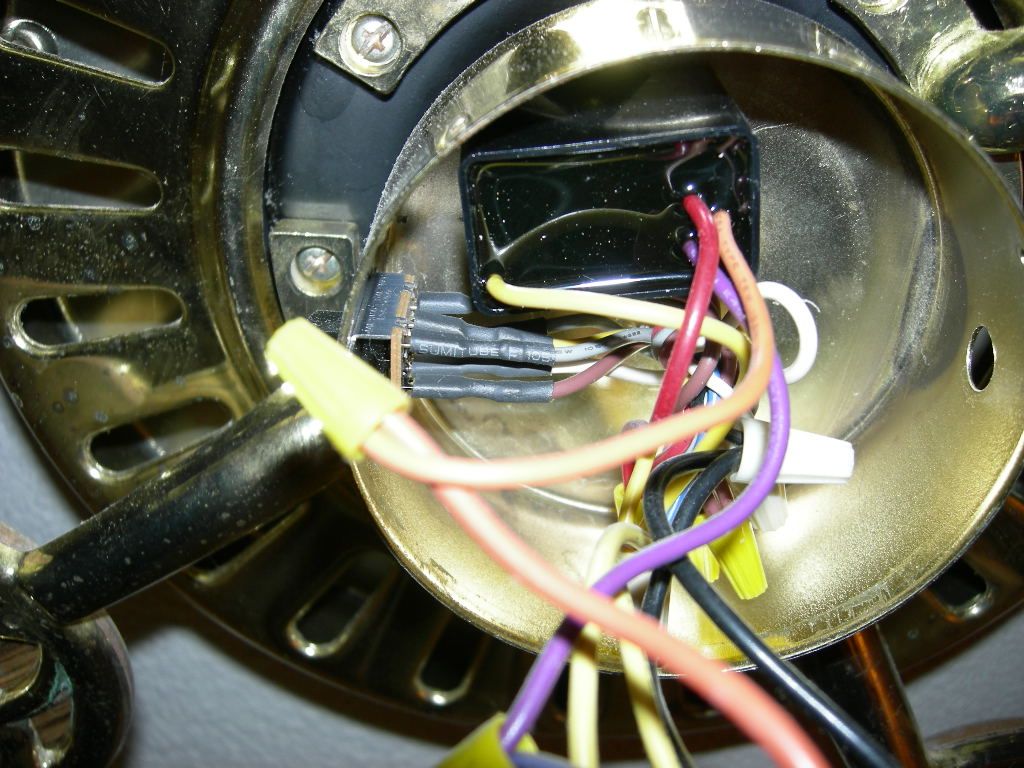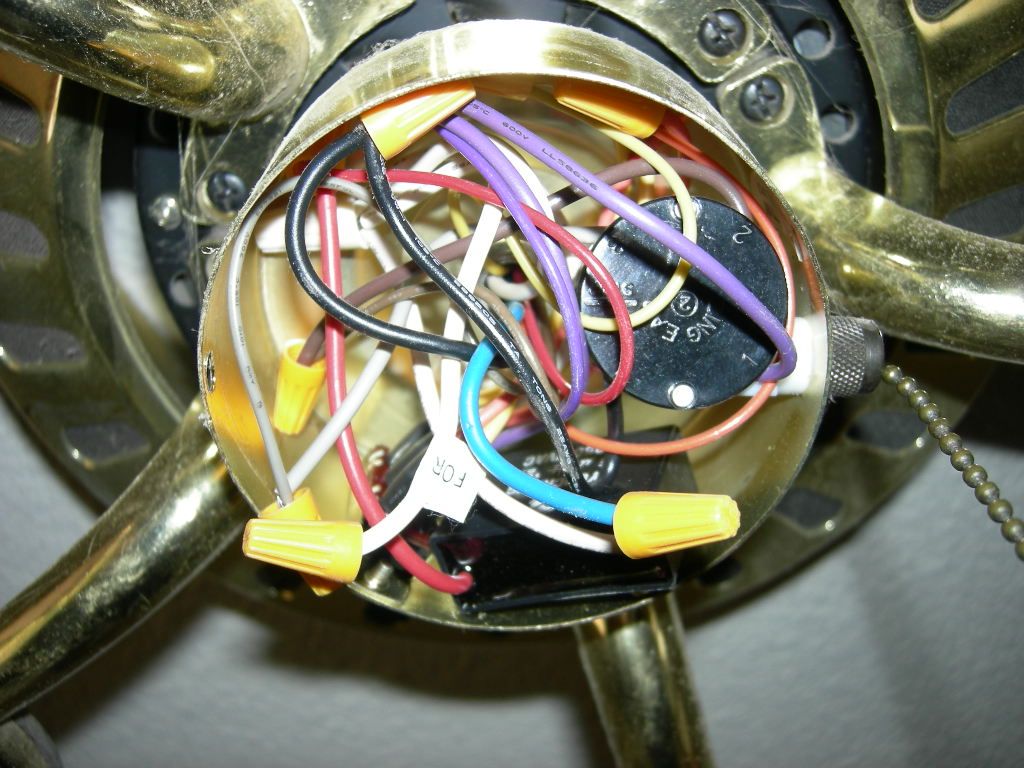Years and years ago I broke the little chain that goes into the fan speed switch. Assuming that the new switch would come with the wires attached like an automotive switch, I threw the switch away along with its attached wires. Big mistake; with no wiring diagram and no attached wires to the new switch, there was no way to determine how to wire the switch up.
So this week I had a brilliant idea: I'd pull the cover off of a known good ceiling fan in the other room and see if I could copy the wiring from it. No dice; the wiring is different and the wire colors are different. But one thing they both have in common: they both have a 6-wire reverse switch and they both take a 4-wire speed switch. The only thing different is one fan uses a 4-wire capacitor and the other known good fan uses a 2-wire capacitor.
Both fans are stand alone fans with no wall switches and no lights in the circuit. You would think that finding a wiring diagram on the internet would be easy, but no. And if you buy a new fan, do you think they'd include a wiring diagram for the inside of the fan? No, they just give you a wiring diagram telling you how to hook the fan up to your house; no internal wiring diagram included in the user manual. This stuff is ridiculous as heck. There should be some kind of standardization of wiring between all makes of fans and the internal wiring diagrams should be easy to find.


So this week I had a brilliant idea: I'd pull the cover off of a known good ceiling fan in the other room and see if I could copy the wiring from it. No dice; the wiring is different and the wire colors are different. But one thing they both have in common: they both have a 6-wire reverse switch and they both take a 4-wire speed switch. The only thing different is one fan uses a 4-wire capacitor and the other known good fan uses a 2-wire capacitor.
Both fans are stand alone fans with no wall switches and no lights in the circuit. You would think that finding a wiring diagram on the internet would be easy, but no. And if you buy a new fan, do you think they'd include a wiring diagram for the inside of the fan? No, they just give you a wiring diagram telling you how to hook the fan up to your house; no internal wiring diagram included in the user manual. This stuff is ridiculous as heck. There should be some kind of standardization of wiring between all makes of fans and the internal wiring diagrams should be easy to find.




